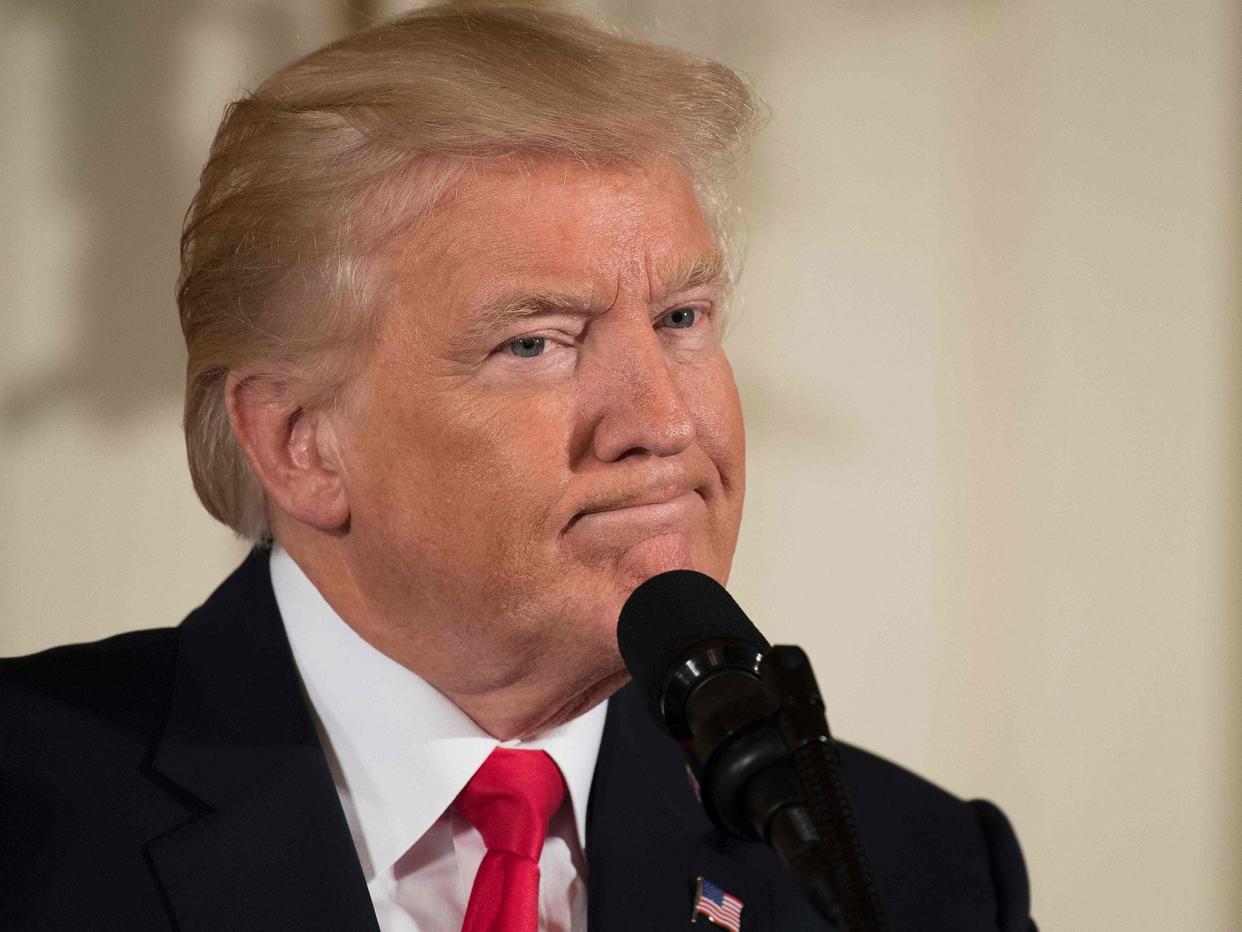Donald Trump: How to remove a US President from office

Donald Trump has already tangled with more than half the Republicans on a Senate committee that would play a key role if he were impeached.
In series of tweets, Mr Trump called Senator Lindsey Graham "publicity seeking" and said he "just can't forget his election trouncing" in the 2016 presidential race. He also assailed Senator Jeff Flake, another Republican critic, as "a non-factor in the Senate," adding, "He's toxic."
Both men are members of the Senate Judiciary Committee, which would be central to any proceeding to remove Mr Trump from office.
Talk of impeaching Mr Trump has been rife among his opponents, particularly in light of the various investigations into alleged murky ties between his campaign and the Kremlin, which he has repeatedly and vehemently denied.
Opponents who also claim Mr Trump is unfit for office have cited the 25th Amendment to the Constitution as an alternative means of removing him from the White House.
However, there is little serious talk being heard in Congress, where both the Senate and House of Representatives are controlled by Trump's fellow Republicans.
This is how the processes work.
Impeachment
Under the Constitution, the President, the Vice President and other US officials can be removed following impeachment and conviction for treason, bribery or other "high crimes and misdemeanours."
The process starts in the House. Individual members can introduce impeachment resolutions like ordinary bills, or the House can initiate proceedings by passing a resolution authorising an inquiry.
In modern history, the House Judiciary Committee has overseen impeachment proceedings. A simple majority vote is needed to move an impeachment resolution, like other legislation, out of the committee.
At that point, it is up to the House majority leader, currently Republican Kevin McCarthy, whether to put the measure to a vote by the full chamber, and when to hold such a vote.
The full House can approve the articles of impeachment by a simple majority vote.
Impeachment is like an indictment and the Senate then tries the official. A two-thirds vote of the Senate is required for conviction, which results in removal from office.
If a president is impeached and removed, the vice president takes over until the next scheduled presidential election picks the next occupant of the White House.
Only two American presidents have been impeached—Andrew Johnson in 1868 and Bill Clinton in 1998. Neither was convicted by the Senate. President Richard Nixon, facing almost certain impeachment over the Watergate scandal, resigned in 1974.
The 25th Amendment
The 25th Amendment to the Constitution was adopted in 1967, following the 1963 assassination of President John Kennedy, to clarify various issues involving presidential and vice presidential succession and incapacity.
Under the amendment's Section 4, the vice president and a majority of either Cabinet officials or "such other body as Congress may by law provide" may declare in writing that the president "is unable to discharge the powers and duties of his office."
If such a declaration is received by the Senate president pro tempore—who presides over the Senate in the absence of the Vice President—and the speaker of the House, the Vice President takes over as acting president.
The President can resume office after informing the same two congressional leaders "that no inability exists"—unless the vice president and a majority of Cabinet officials or another body established by Congress tell those congressional leaders within four days of the declaration that the chief executive is unable to carry out his or her duties.
Congress then must assemble within 48 hours to decide the issue. If two-thirds of the members of the House and of the Senate vote in their respective chambers that the president is unable to discharge his or her duties, the vice president continues as acting president until the next scheduled presidential election decides the next White House occupant. Otherwise, the president resumes office.
Other sections of the 25th Amendment have come into play, such as Section 3 enabling a president to temporarily hand over power to a vice president while, for example, undergoing a medical procedure. Section 4 has never been invoked.
Reuters

 Yahoo News
Yahoo News 
